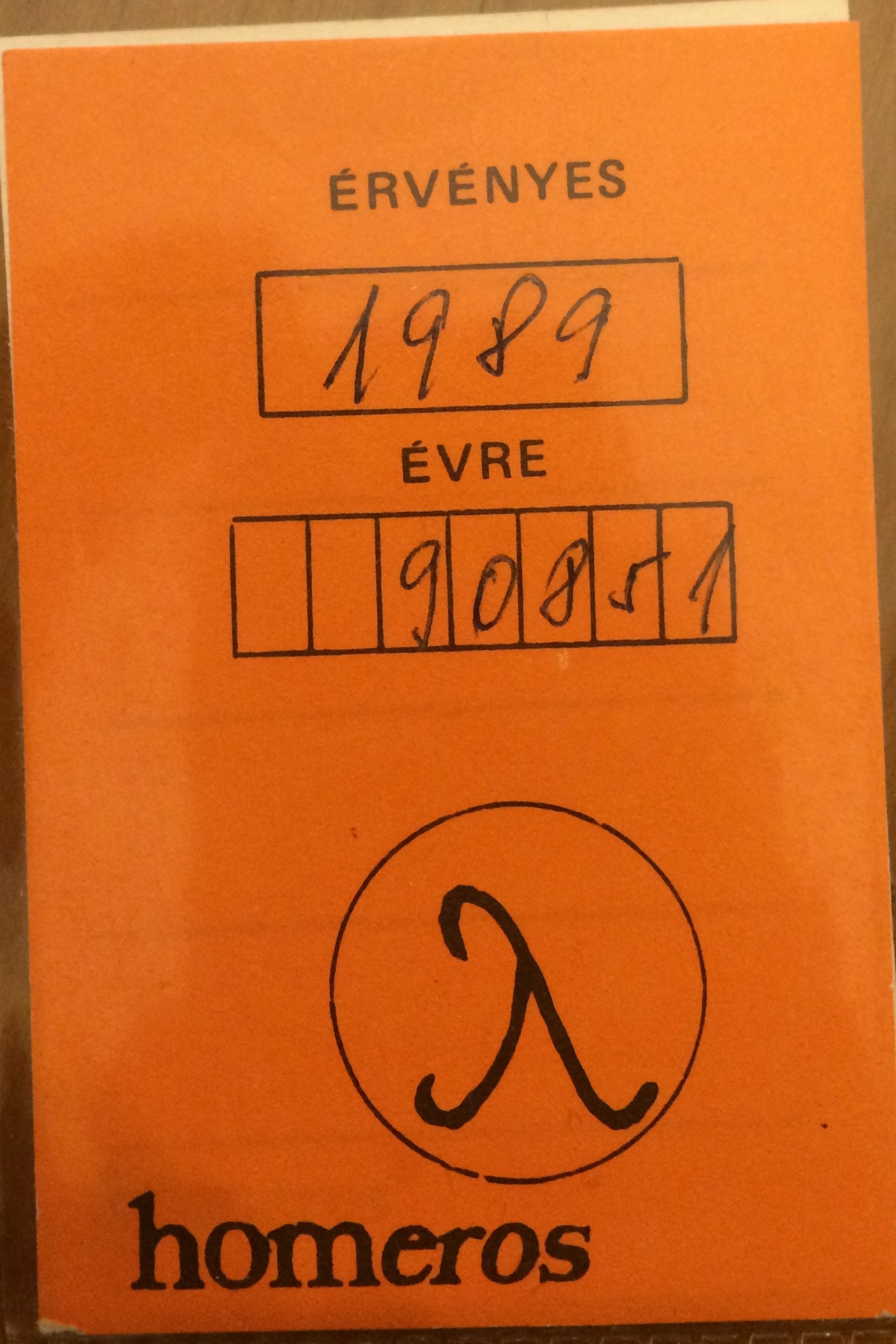The archiving activities of gay subcultures in Hungary is firmly linked to the modalities of institutionalization of homosexuality and the accompanying cultural and political debates. The Archive of the Háttér Society has two major sources. First, it contains the 1980s records of its legal predecessor, the Homeros-Lambda Association, the first officially registered gay organisation in Hungary. The second source held in the archive is the private collection of two founding members of the association, László Láner and Gábor Bencze Takács, the editors of Mások (The Others), a Hungarian gay-rights magazine.
The first successful initiative in homosexual self-organisation in Hungary occurred with the latent assistance of the state authorities. In 1985, initiated by Lajos Romsauer (who later served as president) and sociologist Péter Ambrus (who later served as general secretary), a network of friends began to consider founding an “LMBTQI" (at the time time, an acronym which essentially meant “homosexual”) association or organisation in the country. The foundation of the association, however, proceeded very slowly. Only in 1987 did the Ministry of Health give the green light to an organisation known by the acronym Homérosz (“Magyar Homoszexuálisok ‘Homeros-Lambda’ Egyesülete,” or ‘Homer-Lambda’ Association of Hungarian Homosexuals). Formally, the society was dedicated to AIDS prevention and the social integration of the homosexual minority. Dr Lajos Romsauer, who had already worked to represent homosexuality and the homosexual community in public, served as president. Homérosz also received financial aid from the Ministry of Health, though most of the members had no information about this aid.
Homosexuality was decriminalized in 1962 in Hungary (for the sake of comparison, in France homosexuality was not a crime according to the 1791 revolutionary penal code, while for instance in England and Wales, it was only decriminalized in 1967), but the records of the police and the Ministry of Interior suggest that the authorities made considerable efforts to keep the gay community under surveillance. In the political and social context of late socialism in Hungary, members of the gay community had little chance to represent themselves either symbolically or institutionally in broader society.
Beginning in the 1970s, the public (typically scientific) discourse on queer minorities focused intensively on sexuality, primarily from a psychological perspective. Homosexuality itself was analysed in contradictory terms, mostly as a dysfunction in psychosexual development. As the well-known psychiatrist Béla Buda claimed in his writings, “it is not a disease, and it must be socially accepted as a psychosexual phenomenon.” Accordingly, homosexual relationships were interpreted as an unproductive sexual habit which was an obstacle to genuine happiness. Buda knew that any forced “conversion” to a heterosexual way of life would not be effective. Any such change of sexual preference, he claimed, had to be based on mutual consent. At the same time, Buda also paradoxically maintained that raising the level of social acceptance of homosexuality might help homosexuals “turn back” to heterosexuality and become heterosexuals again.
During the Kádár era, homosexuality could primarily be discussed in public if framed as part of scientific discourse. It is no accident that the first public representative of the homosexual community was a well-known psychiatrist, Dr Lajos Romsauer. In October 1987, another AIDS association (Hungarian Association of AIDS) was founded, which published the first brochure on the issue of AIDS in 1988 under the title Fear Eats the Pleasure. At the time, launching an AIDS prevention program was not an easy task. Without official AIDS screening in the late 1980s in Hungary, someone helped smuggle blood samples collected by Homérosz to Vienna, where an AIDS screening centre provided analyses of the samples.
After the foundation of Homérosz, the next milestone in the life of the LMBTQI community in Hungary was the opening of the very first dedicated Gay and Lesbian Pub, called “Lokál,” which opened during the political turmoil of 1989. The establishment was harassed by local residents in the area after the “political” transition, a fact which indicates the persistence of intolerance of the LMBTQI community.
The archive of the Háttér Society, thus, preserves primarily the traces of sub-cultural self-organisation. The history of the second major source of the archives, the collection of László Láner and Gábor Takács Bencze, illustrates this well. Láner and Takács Bencze were a well-known couple in the Budapest gay community in the 1980s. They founded the gay magazine Mások (The Others) in the early 1990s. The main goal of the periodical, according to them, was to inform the homosexual communities in Hungary, publish news relevant to them, and thus help organise community life. This intention of producing a sub-cultural public space was their guide in collecting and preserving material in the 1980s. In many ways, they turned the documents of this alternative public sphere over to the Háttér Society in 2005. Counter-cultural collecting and archiving became the means of shaping identity for homosexual sub-cultures of the socialist era.
The survival of documents related to gay sub-cultures of the socialist period, therefore, is firmly linked to the changing institutional background of homosexuality after 1989. In post-communist Hungary, civil life was burgeoning in more and less organised forms. Also, several groups were established to represent the individual or collective rights of gay people at the time, for instance, the Habeas Corpus Team, which only partially dealt with the rights of homosexuals, or the Szivárvány (Rainbow) Association. In the mid-1990s, they began to institutionalize. Many of them could eventually obtain official registration (e. g. Habeas Corpus in 1996). The Háttér Society was formally established in 1995.

